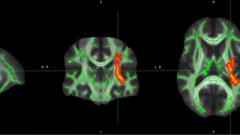ABSTRACT
The nervous system exhibits remarkable adaptability through neuroplasticity, which allows for structural and functional changes in response to intrinsic and extrinsic stimuli. This dynamic process underpins synaptic formation, elimination, learning, memory, and brain recovery after neurological insults. However, neuroplasticity can be compromised by neurotropic viral infections, which present significant challenges to the central nervous system (CNS). Viruses infiltrate the CNS through various mechanisms, including peripheral nerves, disruption of the blood–brain barrier (BBB), and evasion of the immune system, leading to acute or chronic neuronal pathologies. Moreover, these infections may trigger encephalitis, neuroinflammation, and synaptic dysfunction, thereby impairing neural circuits and compromising brain function. Persistent viral infection and chronic responses further exacerbate neuronal damage through oxidative stress, excitotoxicity, and disruption of neural progenitor cells. Collectively, these effects hinder neuroplasticity, resulting in cognitive deficits, behavioral changes, and long-lasting structural alterations. Understanding the mechanisms by which neurotropic viruses impair neuroplasticity is crucial for developing targeted therapeutic interventions. Strategies aimed at addressing viral persistence, mitigating inflammation, and promoting synaptic repair are critical to preserving brain health and functionality. This review provides a comprehensive overview of virus-induced neuronal pathologies and their effects on neuroplasticity, highlighting the importance of innovative treatments to enhance CNS resilience and recovery in affected individuals.

